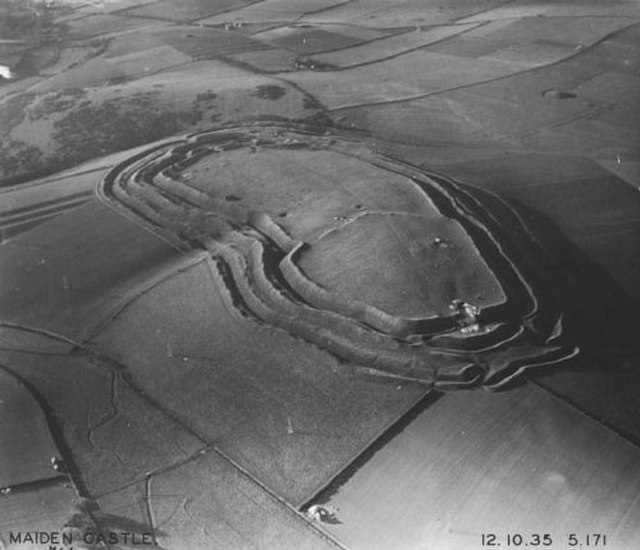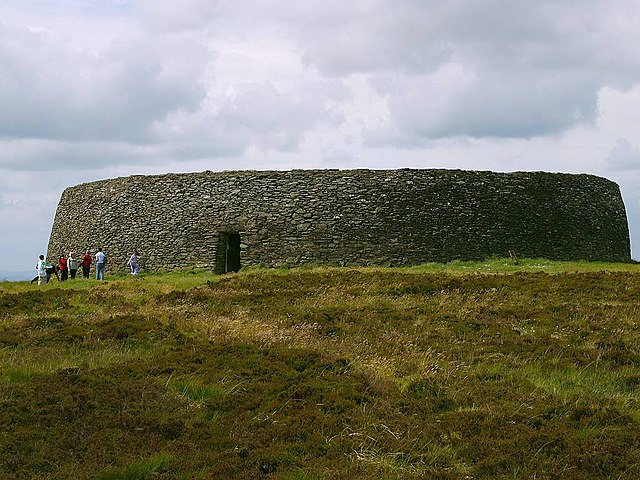A hillfort is a type of fortified refuge or defended settlement located to exploit a rise in elevation for defensive advantage. They are typical of the late European Bronze Age and Iron Age. Some were used in the post-Roman period. The fortification usually follows the contours of a hill and consists of one or more lines of earthworks or stone ramparts, with stockades or defensive walls, and external ditches. If enemies were approaching, the civilians would spot them from a distance.
Maiden Castle in England is one of the largest hillforts in Europe. Photograph taken in 1935 by Major George Allen (1891–1940).
The ramparts of the multivallate British Camp in Herefordshire
Exterior view of the Ringfort Grianan of Aileach situated in County Donegal
Hillfort at Coaña, Asturias, Spain
A fortification is a military construction designed for the defense of territories in warfare, and is used to establish rule in a region during peacetime. The term is derived from Latin fortis ("strong") and facere.
Castillo San Felipe del Morro, Puerto Rico. The fortress and walled city of Old San Juan are a UNESCO World Heritage Site.
Castillo San Felipe de Barajas, Colombia. Cartagena's colonial walled city and fortress were designated a UNESCO World Heritage Site.
Maiden Castle in 1935. The Iron Age hillfort was first built in 600 BC.
Early 20th century aerial photograph of the fortifications of Valletta, Malta, which were built in the 16th and 17th centuries.







